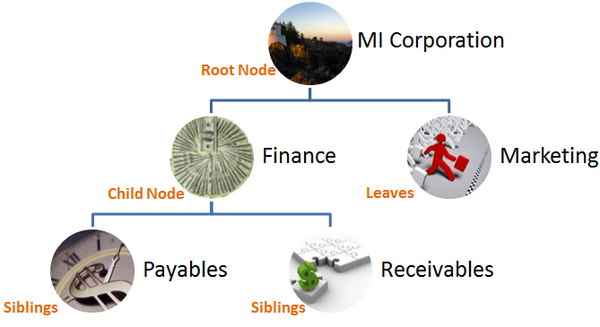Note:- Normally this kind of Information will be required for the Top level management for the decision making.
select * from
(SELECT ‘Holds – Source1’ AS SOURCE,
api.invoice_date AS invoice_date,
api.invoice_num AS invoice_num,
pov.vendor_name AS supplier_name,
apd.distribution_line_number AS inv_line_num,
apd.amount AS invoice_line_amount,
DECODE (aph.hold_reason, NULL, ‘N’, ‘Y’) AS defect,
poh.segment1 AS po_number,
por.release_num AS po_release_num,
pol.line_num AS po_line_num,
aph.hold_date AS hold_date,
aph.hold_lookup_code AS hold_lookup_code,
aph.hold_reason AS hold_reason,
aph.last_update_date AS release_date,
(TRUNC (NVL (aph.last_update_date, SYSDATE)) – TRUNC (aph.hold_date)) AS days_os,
pod.quantity_ordered AS shipment_quantity_ordered,
pod.quantity_delivered AS shipment_quantity_delivered,
pod.quantity_billed AS shipment_quantity_billed,
api.invoice_received_date AS invoice_received_date,
pob.agent_name AS buyer,
povs.vendor_site_code AS supplier_site,
ppf.full_name AS requestor,
rcvh.receipt_num AS receipt_number,
rcv.quantity AS received_accepted_qty,
rcv.unit_of_measure AS uom,
rcv.creation_date AS receipt_transacted_date,
rcv.transaction_date AS receipt_date
FROM APPS.ap_invoices_all api,
APPS.ap_invoice_distributions_all apd,
APPS.po_distributions_all pod,
APPS.po_headers_all poh,
APPS.po_releases_all por,
APPS.po_lines_all pol,
APPS.ap_holds_all aph,
APPS.po_vendors pov,
APPS.po_agents_v pob,
APPS.po_vendor_sites_all povs,
APPS.rcv_transactions rcv,
APPS.rcv_shipment_headers rcvh,
APPS.po_line_locations_all pll,
APPS.hr_locations_all loc,
APPS.per_all_people_f ppf
WHERE 1 = 1
AND api.invoice_id = apd.invoice_id
AND aph.invoice_id(+) = api.invoice_id
AND api.vendor_id = pov.vendor_id(+)
AND api.cancelled_date IS NULL
AND apd.po_distribution_id = pod.po_distribution_id(+)
AND aph.line_location_id = pod.line_location_id
AND poh.po_header_id(+) = pod.po_header_id
AND por.po_release_id(+) = pod.po_release_id
AND pol.po_header_id (+) = pod.po_header_id —
AND pol.po_line_id (+) = pod.po_line_id
AND poh.agent_id = pob.agent_id(+)
AND povs.vendor_site_id(+) = poh.vendor_site_id
AND apd.po_distribution_id = rcv.po_distribution_id(+)
AND rcvh.shipment_header_id(+) = rcv.shipment_header_id
AND rcv.destination_type_code(+) = ‘RECEIVING’
AND pll.line_location_id(+) = pod.line_location_id
AND pll.ship_to_location_id = loc.location_id(+)
AND pod.deliver_to_person_id = ppf.person_id (+)
AND NVL (ppf.effective_start_date, SYSDATE) <= SYSDATE
AND NVL (ppf.effective_end_date, SYSDATE + 1) > SYSDATE
UNION
SELECT ‘Holds NotLinked To PO-Source2’ AS SOURCE,
api.invoice_date AS invoice_date, api.invoice_num AS invoice_num,
pov.vendor_name AS supplier_name,
apd.distribution_line_number AS inv_line_num,
apd.amount AS invoice_line_amount,
DECODE (aph.hold_reason, NULL, ‘N’, ‘Y’) AS defect,
poh.segment1 AS po_number, por.release_num AS po_release_num,
pol.line_num AS po_line_num, aph.hold_date AS hold_date,
aph.hold_lookup_code AS hold_lookup_code,
aph.hold_reason AS hold_reason, aph.last_update_date AS release_date,
(TRUNC (NVL (aph.last_update_date, SYSDATE)) – TRUNC (aph.hold_date)
) AS days_os,
pod.quantity_ordered AS shipment_quantity_ordered,
pod.quantity_delivered AS shipment_quantity_delivered,
pod.quantity_billed AS shipment_quantity_billed,
api.invoice_received_date AS invoice_received_date,
pob.agent_name AS buyer, povs.vendor_site_code AS supplier_site,
ppf.full_name AS requestor, rcvh.receipt_num AS receipt_number,
rcv.quantity AS received_accepted_qty, rcv.unit_of_measure AS uom,
rcv.creation_date AS receipt_transacted_date,
rcv.transaction_date AS receipt_date
FROM APPS.ap_invoices_all api,
APPS.ap_invoice_distributions_all apd,
APPS.po_distributions_all pod,
APPS.po_headers_all poh,
APPS.po_releases_all por,
APPS.po_lines_all pol,
APPS.ap_holds_all aph,
APPS.po_vendors pov,
APPS.po_agents_v pob,
APPS.po_vendor_sites_all povs,
APPS.rcv_transactions rcv,
APPS.rcv_shipment_headers rcvh,
APPS.po_line_locations_all pll,
APPS.hr_locations_all loc,
APPS.per_all_people_f ppf
WHERE 1 = 1
AND api.invoice_id = apd.invoice_id
AND aph.invoice_id(+) = api.invoice_id
AND api.vendor_id = pov.vendor_id(+)
AND api.cancelled_date IS NULL
AND apd.po_distribution_id = pod.po_distribution_id(+)
AND aph.line_location_id = pod.line_location_id
AND aph.line_location_id IS NULL
AND poh.po_header_id(+) = pod.po_header_id
AND por.po_release_id(+) = pod.po_release_id
AND pol.po_header_id(+) = pod.po_header_id
AND pol.po_line_id(+) = pod.po_line_id
AND poh.agent_id = pob.agent_id(+)
AND povs.vendor_site_id(+) = poh.vendor_site_id
AND apd.po_distribution_id = rcv.po_distribution_id(+)
AND rcvh.shipment_header_id(+) = rcv.shipment_header_id
AND rcv.destination_type_code(+) = ‘RECEIVING’
AND pll.line_location_id(+) = pod.line_location_id
AND pll.ship_to_location_id = loc.location_id(+)
AND pod.deliver_to_person_id = ppf.person_id(+)
AND NVL (ppf.effective_start_date, SYSDATE) <= SYSDATE
AND NVL (ppf.effective_end_date, SYSDATE + 1) > SYSDATE
UNION
SELECT ‘NON Holds – Source 3’ AS SOURCE, apii.invoice_date AS invoice_date,
apii.invoice_num AS invoice_num, pov.vendor_name AS supplier_name,
apd.distribution_line_number AS inv_line_num,
apd.amount AS invoice_line_amount, ‘N’ AS defect,
poh.segment1 AS po_number, por.release_num AS po_release_num,
pol.line_num AS po_line_num, NULL AS hold_date,
NULL AS hold_lookup_code, NULL AS hold_reason, NULL AS release_date,
0 AS days_os, pod.quantity_ordered AS shipment_quantity_ordered,
pod.quantity_delivered AS shipment_quantity_delivered,
pod.quantity_billed AS shipment_quantity_billed,
apii.invoice_received_date AS invoice_received_date,
pob.agent_name AS buyer, povs.vendor_site_code AS supplier_site,
ppf.full_name AS requestor, rcvh.receipt_num AS receipt_number,
rcv.quantity AS received_accepted_qty, rcv.unit_of_measure AS uom,
rcv.creation_date AS receipt_transacted_date,
rcv.transaction_date AS receipt_date
FROM APPS.ap_invoices_all apii,
APPS.ap_invoice_distributions_all apd,
APPS.po_distributions_all pod,
APPS.po_headers_all poh,
APPS.po_releases_all por,
APPS.po_lines_all pol,
APPS.po_vendors pov,
APPS.po_agents_v pob,
APPS.po_vendor_sites_all povs,
APPS.rcv_transactions rcv,
APPS.rcv_shipment_headers rcvh,
APPS.po_line_locations_all pll,
APPS.hr_locations_all loc,
APPS.per_all_people_f ppf
WHERE 1 = 1
AND apii.invoice_id = apd.invoice_id
AND apii.vendor_id = pov.vendor_id(+)
AND apii.cancelled_date IS NULL
AND apd.po_distribution_id = pod.po_distribution_id(+)
AND apd.distribution_line_number NOT IN (
SELECT apd.distribution_line_number
FROM APPS.ap_invoices_all api,
APPS.ap_invoice_distributions_all apd,
APPS.po_distributions_all pod,
APPS.ap_holds_all aph
WHERE 1 = 1
AND api.invoice_id = apd.invoice_id
AND aph.invoice_id(+) = api.invoice_id
AND api.cancelled_date IS NULL
AND apd.po_distribution_id = pod.po_distribution_id(+)
AND aph.line_location_id = pod.line_location_id
AND api.invoice_id = apii.invoice_id)
AND poh.po_header_id(+) = pod.po_header_id
AND por.po_release_id(+) = pod.po_release_id
AND pol.po_header_id(+) = pod.po_header_id
AND pol.po_line_id(+) = pod.po_line_id
AND poh.agent_id = pob.agent_id(+)
AND povs.vendor_site_id(+) = poh.vendor_site_id
AND apd.po_distribution_id = rcv.po_distribution_id(+)
AND rcvh.shipment_header_id(+) = rcv.shipment_header_id
AND rcv.destination_type_code(+) = ‘RECEIVING’
AND pll.line_location_id(+) = pod.line_location_id
AND pll.ship_to_location_id = loc.location_id(+)
AND pod.deliver_to_person_id = ppf.person_id(+)
AND NVL (ppf.effective_start_date, SYSDATE) <= SYSDATE
AND NVL (ppf.effective_end_date, SYSDATE + 1) > SYSDATE)
where invoice_num=’Your Invoice number’


Recent Comments